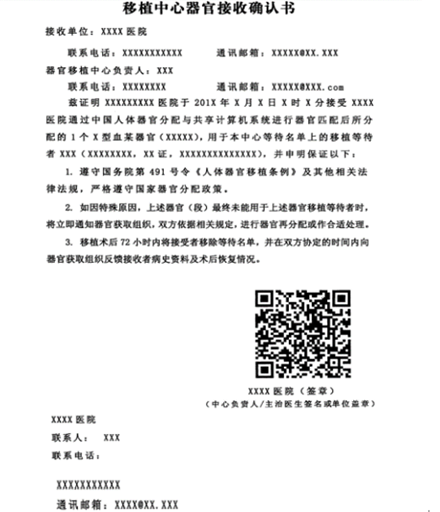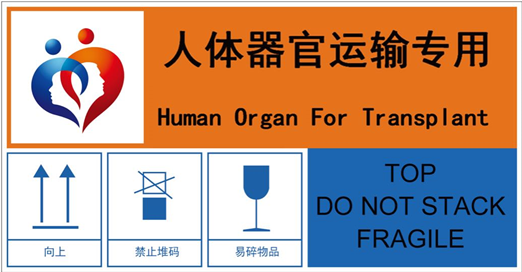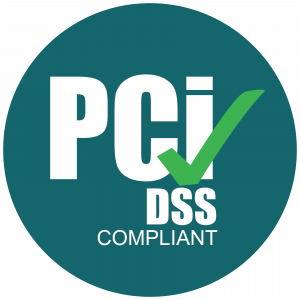常见特殊行李运输
一、小动物
1.春秋航空承运的小动物仅限家庭饲养的猫、狗,具有易于伤人特性、易发生呼吸问题、短鼻系列及状态不宜进行航空运输的猫和狗不予承运。
2.由于本公司大部分飞机货舱不具备供氧能力,因此不办理小动物托运。如符合客舱宠物运输条件,可申请办理客舱宠物。
二、服务犬
1.服务犬是指经过专门训练为残疾人生活和工作提供协助的特殊犬,包括辅助犬、导听犬、导盲犬。情感支持动物(包括精神抚慰犬)由于认证等原因限制,暂不纳入我司可承运的服务犬范围。
2.服务犬陪伴残疾旅客同行时,方可按照服务犬接受运输。每名残疾旅客可携带的服务犬数量不得超过1只,每一航段上服务犬总数不超过4只。
3.需携带服务犬乘机的残疾旅客,应当在定座时提出申请,最迟不能晚于航班离站前24小时,并提供残疾人证明、服务犬的身份证明和检疫证明,以备查验。
4.残疾旅客携带的服务犬,由旅客自行运到机场,残疾旅客在办理登机手续时需向工作人员出示残疾人证明、服务犬的身份证明和检疫证明。
5.服务犬应接受安全检查,工作人员需提醒旅客在办理安检前清空服务犬使用的排泄袋。
6.残疾旅客对携带的服务犬承担全部责任。在运输中除本公司原因外出现的服务犬受伤、患病和死亡,本公司不承担责任。
7.带进客舱的服务犬的食物和食具不占用免费行李额。
8.带进客舱的服务犬,应在登机前为其系上牵引绳索,并不得占用座位和让其任意跑动。在征得服务犬活动范围内相关旅客同意的情况下,可不要求残疾人为服务犬戴上口套。
9.符合国际运输条件的,还需提供入境或过境许可证及有关国家所规定的其它证件(具体要求以有关国家的详细规定为准)。
三、婴儿车
婴儿旅客无免费行李额,可免费托运一件折叠式婴儿车。儿童和成人旅客,如需托运的婴儿车,按重量计算费用,超出免费行李额(重量)部分,按实际超出重量收取逾重行李费。
四、高尔夫球具/滑雪用具/渔具
托运高尔夫球具或滑雪用具或渔具时,按一般托运行李办理。
五、精密仪器、电器、乐器等类物品
1.“精密仪器”包括精密计量仪器、精密天文观测仪器、精密遥感仪器、精密测控仪器、精密医疗仪器等具有自动化、数字化、智能化、综合化及多维、动态测量功能的高科技仪器。常见的精密仪器有:各种水质分析仪器,环境检测仪器,显微镜,移液器,培养箱,干燥设备,天平衡器,光谱分析仪器,色谱分析仪器,试验箱,实验耗材,实验仪器,生命科学仪器,光学仪器,除湿精华仪器,物性测定仪器,食品检测仪器,药检仪器,纺织仪器,石油仪器,医疗器械等。
2. “电器”泛指所有用电的器具,从专业角度上来讲,主要指用于对电路进行接通、分断,对电路参数进行变换,以实现对电路或用电设备的控制、调节、切换、检测和保护等作用的电工装置、设备和元件。从普通角度来讲,主要是指家庭常用的一些为生活提供便利的用电设备,如电视机,空调,冰箱,洗衣机,台式电脑,各种小家电等。
3. “乐器”指能够发出乐音,并能进行音乐艺术再创造的器具。乐器分为民族乐器和西洋乐器两大类。主要有:长号、大提琴、小提琴、二胡、琵琶、古筝、唢呐、长号、小号、圆号、单簧管、双簧管、萨克斯管、电子琴、钢琴、手风琴、竖琴、电吉他等。
4.精密仪器、电器、乐器等如符合公司非托运行李规定,可由旅客带入客舱自行保管。如重量、体积超过非托运行李限制规定,可由旅客购买占座行李票、作为占座行李带入客舱自行保管并独自承担保管责任。如作为托运行李运输,应符合以下要求:
a)单件重量国内航线不超过50公斤,国际/地区航线不超过32公斤,三边尺寸不超过40×60×100厘米。
b)精密仪器、电器、乐器等类物品必须有出厂包装或者有符合春秋航空托运行李要求的包装,方可进行行李托运。建议旅客在办理托运手续时使用硬壳箱包装好,并在箱内进行内物填充防止其在运输过程中左右摇晃造成不必要的损坏。
c)精密仪器、电器、乐器等类物品的重量可以计算在免费行李额内。
六、折叠轮椅/电动轮椅
1.折叠轮椅、电动轮椅是行动不便的旅客旅行中使用的助步工具。
2.电动轮椅必须作为托运行李运输。折叠轮椅尺寸超过非托运行李规定,或者客舱内没有存放设施或空间,应将折叠轮椅作为托运行李运输。
3.折叠轮椅、电动轮椅必须作为托运行李运输。
4.电动轮椅是靠电池来提供动力的,其中的蓄电池或锂电池在运输过程中具有一定的危险性。电动轮椅在办理托运时,必须符合本公司危险品运输条款中对于电池驱动的轮椅或行动辅助设备的要求。此外如残疾旅客需托运电动轮椅,应在普通旅客办理乘机手续截止前2小时到达机场交运。
七、自行车
自行车应作为货物运输。如旅客坚持按托运行李运输的,需满足以下条件:
1.自行车必须有完善的包装。
2.非折叠式自行车应旋转自行车车把90度并固定,去掉脚踏板,将车轮卸下,牢固绑在车身上。折叠式自行车应折叠并绑牢。轮胎必须放气。
3.自行车的重量可以计算在免费行李额内。
八、骨灰
1.在骨灰盒的外包装和携带骨灰盒旅客的情绪不致引起其他旅客察觉和反感的情况下,如旅客要求,可带入客舱运输。
2.骨灰如作托运行李运输,本公司只承担一般托运行李责任。
3.托运的骨灰应装在密封的罐或盒内,外面用木箱套装并加衬垫,最外层用布包装。
九、个人娱乐/人体功能辅助用小电器/电子设备
1.春秋航空禁止旅客携带任何在飞行中可能干扰航空器通讯和导航的电子设备,个人娱乐、人体辅助功能用小电器(或电子设备)除外。
2.春秋航空保留要求旅客交运或拒绝承运任何个人娱乐/人体功能辅助用小电器/电子设备的权利。
3.乘坐春秋航空航班的旅客可以自行携带下列物品:
(a) 盲人旅客携带的盲杖、助视器和盲人眼镜;
(b) 残疾旅客携带的助行设备,包括拐杖、假肢、电动人造假肢等;
(c) 聋哑旅客携带的助听设备,包括电子耳蜗、助听器;
(d) 电动剃须刀心脏起搏器(含以植入心脏的含微量放射性元素如钋等的心脏助动器);
(e) 不含FM波段的收音机;
(f) 录音机;
(g) 摄像机;
(h) 掌上电子游戏机;
禁止运输
禁止旅客随身携带但可作为行李托运的物品
随身携带或者作为行李托运有限定条件的物品
禁止旅客随身携带或者托运的物品
一、枪支等武器(包括主要零部件) 能够发射弹药(包括弹丸及其他物品)并造成人身严重伤害的装置或者可能被误认为是此类装置的物品 |
1、军用枪、公务用枪 | 如手枪、步枪、冲锋枪、机枪、防爆枪 |
2、民用枪 | 如气枪、猎枪、射击运动枪、麻醉注射枪 |
3、其他枪支 | 如样品枪、道具枪、发令枪、钢珠枪、境外枪支以及各类非法制造的枪支 |
4、上述物品仿制品 |
二、爆炸或燃烧物质和装置 能够造成人身严重伤害或者危及航空器安全的爆炸或燃烧装置(物质)或者可能被误认为是此类装置(物质)的物品,主要包括: |
1、弹药 | 如炸弹、手榴弹、照明弹、燃烧弹、烟雾弹、信号弹、催泪弹、毒气弹、子弹(空包弹、教练弹、铅弹) |
2、爆破器材 | 如炸药、雷管、引信、起爆管、导火索、导爆索、爆破剂 |
3、烟火制品 | 如礼花弹、烟饼、黄烟、烟花爆竹 |
4、上述物品的仿制品 |
三、管制刀具 能够造成人身伤害或者对航空安全和运输秩序构成较大危害的管制器具,主要包括: |
1、军警械具 | 如警棍、警用电击器、军用或警用匕首、手铐、拇指铐、脚镣、催泪喷射器 |
2、管制刀具 | 如匕首(带有刀柄、刀格和血槽,刀尖角度小于60度的单刃、双刃或多刃尖刀)、三棱刮刀(具有三个刀刃的机械加工用刀具)、带有自锁装置的弹簧刀或跳刀(刀身展开或弹出后,可被刀柄内的弹簧或卡锁固定自锁的折叠刀具)、其他相似的单刃双刃三棱尖刀(刀尖角度小于60度刀身长度超过150毫米的各类单刃、双刃、多刃刀具)以及其他刀尖角度大于60度刀身长度超过220毫米的各类单刃、双刃、多刃刀具 |
3、其他属于国家规定的管制器具 | 如弩 |
四、危险物品 能够造成人身伤害或者对航空安全和运输秩序构成较大危害的危险物品,主要包括: |
1、压缩气体和液化气体 | 如氢气、甲烷、乙烷、丁烷、天然气、乙烯、丙烯、乙炔(溶于介质的)、一氧化碳、液化石油气、氟利昂、氧气、二氧化碳、水煤气、打火机燃料及打火机用液化气体 |
2、自燃物品 | 如黄磷、白磷、硝化纤维(含胶片)、油纸及其制品 |
3、遇湿易燃物品 | 如金属钾、钠、锂、碳化钙(电石)、镁铝粉 |
4、易燃液体 | 如汽油、煤油、柴油、苯、乙醇(酒精)、丙酮、乙醚、油漆、稀料、松香油及含易燃溶剂制品 |
5、易燃固体 | 如红磷、闪光粉、固体酒精、赛璐珞、发泡剂 |
6、氧化剂和有机过氧化物 | 如高锰酸钾、氯酸钾、过氧化钠、过氧化钾、过氧化铅、过醋酸、双氧水 |
7、毒害品 | 如氰化物、砒霜、剧毒农药等剧毒化学品 |
8、腐蚀性物品 | 如硫酸、盐酸、硝酸、氢氧化钠、氢氧化钾、汞(水银)有液蓄电池 |
五、其他物品 其他能够造成人身伤害或者对航空安全和运输秩序构成较大危害的物品,主要包括: |
1、传染病病原体 | 如乙肝病毒、炭疽杆菌、结核杆菌、艾滋病病毒 |
2、火种(包括各类点火装置) | 如打火机、火柴、点烟器、镁棒(打火石) |
3、锂电池 | 如额定能量超过160Wh的充电宝、锂电池(电动轮椅使用的锂电池另有规定) |
4、酒精饮料 | 如酒精体积百分含量大于70%的酒精饮料 |
5、其他 | 如强磁化物、有强烈刺激性气味或者容易引起旅客恐慌情绪的物品以及不能判明性质可能具有危险性的物品 |
6、放射性物品 | 如发射性同位素 |
六、国家法律、行政法规、规章规定的其他禁止携带、运输的物品 |
禁止旅客随身携带但可作为行李托运的物品
一、锐器 该类物品带有锋利边缘或锐利尖端,由金属或其他材料制成的、强度足以造成人身严重伤害的器械,主要包括: |
1、日用刀具(刀刃长度大于6厘米) | 如菜刀、水果刀、剪刀、美工刀、裁纸刀等 |
2、专用刀具(刀刃长度不限) | 如手术刀、屠宰刀、雕刻刀、刨刀、铣刀等 |
3、其他刀具 | 用于武术文艺表演的刀、矛、剑、戟等 |
二钝器 该类物品不带有锋利边缘或锐利尖端,由金属或其他材料制成的、强度足以造成人身严重伤害的器械,主要包括: |
棍棒(含伸缩棍、双节棍)、球棒、桌球杆、板球球拍、曲棍球杆、高尔夫球杆、登山杖、滑雪杖、指节铜套(手钉)等 |
三其他 其他能够造成人身伤害或对航空安全和运输秩序构成较大危害的物品,主要包括: |
1、工具 | 如钻机(含钻头)、凿、锥、锯、螺栓枪、射钉枪、螺丝刀、撬棒、锤、钳、焊枪、扳手、斧头、短柄小斧(太平斧)、游标卡尺、冰镐、碎冰锥等 |
2、其他物品 | 如飞镖、弹弓、弓、箭、蜂鸣自卫器以及不在国家规定范围内的电击器、梅斯气体、催泪瓦斯、胡椒辣椒喷剂、酸性喷雾剂、驱除动物喷剂等 |
随身携带或者作为行李托运有限定条件的物品
| 1、随身携带有限定条件但可作为行李托运的物品 | 旅客乘坐国际、地区航班时,液态物品应当盛放在单体容器容积不超过100mL的容器内随身携带,与此同时盛放液态物品的容器应置于最大容积不超过1L、可重新封口的透明塑料袋中,每名旅客每次仅允许携带一个透明塑料袋,超过部分应作为行李托运 |
旅客乘坐国内航班时,液态物品禁止随身携带(航空旅行途中自用的化妆品、牙膏及剃须膏除外)。航空旅行途中自用的化妆品必须同时满足三个条件(每种限带一件、盛放在单体容器容积不超过100mL的容器内、接受开瓶检查)方可随身携带,牙膏及剃须膏每种携带一件且不得超过100g(mL)。旅客在同一机场控制区内由国际、地区航班转乘国内航班时,其随身携带入境的免税液态物品必须同时满足三个条件(出示购物凭证、置于已封口且完好无损的透明塑料袋中、经安全检查确认)方可随身携带,如在转乘国内航班过程中离开机场控制区则必须将随身携带入境的免税液态物品作为行李托运 |
婴儿航空旅行途中必需的液态乳制品、糖尿病或其他疾病患者航空旅行途中必需的液态药品,经安全检查确认后方可随身携带 |
旅客在机场控制区、航空器内购买或者取得的液态物品在离开机场控制区之前可随身携带 |
2、禁止随身携带但作为行李托运有限定条件的物品 | 酒精饮料禁止随身携带,作为行李托运时有以下限定条件: (1)标识全面清晰且置于零售包装内,每个容器容积不得超过5L; (2)酒精的体积百分含量≤24%,托运数量不受限制; (3)酒精的体积百分含量>24%、≤70%时,每位旅客托运数量不超过5L。 |
3、禁止作为行李托运且随身携带有限定条件的物品 | 充电宝、锂电池禁止作为行李托运,随身携带时有以下限定条件(电动轮椅使用的锂电池另有规定): (1)标示全面清晰,额定能量≤100Wh; (2)当额定能量>100Wh、≤160Wh时必须经公司批准且每人限带2块。 |
4、国家法律、行政法规、规章规定的其他限制运输的物品。 |
人体捐献器官运输须知
运输人体捐献器官是航空公司应履行的社会责任,春秋航空将竭诚为携带人体捐献器官的旅客提供优先服务保障。为了使运输更为顺畅,请通读以下须知。
人体器官获取组织(Organ Procurement Organization,以下简称OPO)工作员在乘坐春秋航空航班转运人体捐献器官前,请事前了解以下事项,并做好相关准备工作:
1、须知中所称人体捐献器官,是指摘取自人体器官捐献人,具有特定功能的心脏、肺脏、肝脏、肾脏或者胰腺等器官的全部或者部分。
2、需要至少于航班计划起飞时间前4小时通过客服电话95524向我们提出申请,告知您的航班信息、人体捐献器官类型、包装尺寸、涉及的危险品等信息,根据要求填写《活体器官、血液制品运输风险告知确认书》。
3、凭证要求:请携带人体器官获取组织出具的《移植中心器官接收确认书》,注明所运输器官的合法来源、用途、联系人姓名及联系人电话等。如无法提供《确认书》副本,旅客需提供区县级(含)以上或相当于这一级别的医疗机构出具的合法证明。

4、人体捐献器官的运输专用容器及包装要求:
(1)装有人体捐献器官的运输专用容器需要在显著位置张贴“人体器官运输专用”标识;

(2)运输专用容器应由OPO工作人员作为手提行李随身携带,并在运输过程中由旅客本人自行照管。本公司不接受人体捐献器官以货物或托运行李形式运输。
(3)作为非托运行李带入客舱时,如体积超过20×40×55厘米或重量超过10公斤,需购买额外占座行李票放置该物品;同时需满足占座行李要求,即占座行李总体积不能超过40×60×100厘米,总重量不能超过75公斤。
(4)运输专用容器内含有危险品的,应符合危险品航空运输的相关要求。运输专用容器内含有保存人体捐献器官所必须的液态物品的,不受液态物品航空运输条件的限制,但应满足运输安全要求,防止其破损或泄露。
(5)运输专用容器应当接受民航行李安检设备检查。
5、发生航班延误、备降或返航的,我司将根据OPO工作人员意愿协助办理乘机或退、变更手续。
(1)继续通过春秋航空转运人体捐献器官的,除天气因素等不可抗力外,我司将尽力协调承运人体捐献器官的航班优先起飞;
(2)旅客需签转至其他航空公司,或改乘其他交通工具的,我司将在合理的范围内给予帮助,费用由旅客自理。
6、春秋航空将尽力为您提供优先的服务保障,但由于人体捐献器官的特性,其在航空运输中仍然存在因可能出现的航班延误而造成失活的风险,我司仅承担普通随身携带行李的运输责任,不承担该类物品的保管及运输途中晚点等未知因素影响的责任。
春秋航空客舱宠物运输要求
一、客舱宠物定义
指符合特定条件,可由旅客携带进入客舱的家庭驯养的猫、狗类宠物。
二、适用航班及限制
客舱宠物运输目前仅适用春秋航空执飞的国内直飞航班。每个航班最多带入4只宠物。
三、不接受下列情形的旅客申请:
不受理单独乘机的未成年人、60周岁及以上旅客、伤病、残疾旅客、孕妇等特殊旅客及单独携带婴儿或者儿童的成人申请携带宠物进入客舱(残疾人旅客申请服务犬进入客舱不在此列)。
四、不接受下列情形的宠物进入客舱运输:
(1)家庭驯养的猫、狗以外的宠物;
(2)旅客未完成必要的宠物飞行运输准备,如运输证明文件不齐全、宠物箱不符合要求、未为宠物清洁身体、未修剪指甲、未为宠物穿戴衣物、口罩、纸尿裤、未准备隔尿垫、未栓挂一次性锁扣等;
(3)具有传染病症候,或疑似传染病载体的动物;
(4)出生不满8周的宠物;
(5)怀孕宠物或是在飞机起飞前48小时之内刚刚分娩过的动物;
(6)性格焦躁、娇气、弱小,对高温高空环境敏感或不能长时间待在宠物箱里的宠物;
(7)服用镇静剂或安眠药的宠物;
(8)浑身散发恶臭或让人难以忍受的刺鼻气味的宠物;
(9)患有耳鼻喉科、心血管系统、脑血管系统、呼吸系统、消化系统疾病,以及48小时内进行过手术的宠物。
(10)所有属于不适合航空旅行的宠物及与其杂交的品种(禁止办理运输),禁止办理宠物运输:
①危险犬及其杂交品种(包含格斗犬只等攻击性强的烈性犬、有烈性犬血统的混种犬,以及体型特别巨大并容易造成视觉恐惧的大型犬):大型和中型梗犬(如贝灵顿梗、猎狐梗犬)、斯塔夫梗犬、所有拳师犬、所有獚犬(西班牙猎犬)、所有獒犬(如马士提夫獒犬)、比特斗牛梗犬(又名比特犬)、日本土佐犬(又名土佐犬)、巴西菲勒犬(又名巴西獒犬)、阿根廷杜高犬、马犬。
注:仅限制大型和中型梗犬,小型梗及玩具梗可正常运输,小型梗及玩具梗包括西高地白梗、迷你雪纳瑞等。
②扁平鼻的狗或猫:所有斗牛犬(如法国斗牛犬、英国斗牛犬)、所有巴哥犬、拳师犬、查理士王小猎犬、西施犬、牛梗犬(如牛头梗犬、斯塔福德郡梗犬)、美洲嚣犬、波士顿梗犬、布鲁塞尔葛里芬犬(又名比利时粗毛犬)、猴面犬(又名阿芬平嘉犬)、英国玩赏曲卡犬、英国玩具猎鹬犬(又名英国玩具犬)、查理士王小猎犬、拉萨犬、京巴犬(又名北京犬)、松狮犬、日本狆犬、沙皮犬;缅甸猫、喜马拉雅猫、波斯猫、异国短毛猫(又名加菲猫)。
③对高温高空环境不适的犬种:萨摩耶犬。
五、产品预订
(1)产品预订
旅客需在航班起飞前24小时以外拨打春秋航空官方客服电话95524或通过春秋航空在线客服预订。每名旅客只能带一只宠物。
六、乘机材料
旅客须提供《动物检疫合格证明》和《小动物疫苗注射证明》(犬类应提供小动物疫苗注射证明),该证明单据上必须盖有该机构的检疫专用章,需要原件供现场工作人员审核,办理宠物运输的航班日期需在动物检疫合格证明、疫苗的有效期之内。
七、航空箱要求
宠物航空箱要求为硬质宠物航空箱,长×宽×高尺寸不得超过61×45×32厘米,宠物及航空箱合计总重量不超过14公斤。建议携带能够在宠物箱内自由站立和转身的宠物同行,如果宠物体积过大,飞行中全程活动受限,可能会影响宠物乘机的舒适度。要求旅客自备专业及符合尺寸要求的航空箱,并铺上隔尿垫。宠物箱中不得放置宠物食物及水和其他违禁物品。
八、防止宠物逃逸及相关要求
要求宠物航空箱开门处能穿过一次性锁扣,确保锁闭后航空宠物箱门无法打开。要求所有开口处全部拴挂一次性锁扣,禁止私自打开。如开口处无法有效穿过一次性锁扣锁闭、固定住的,应予以拒运。
宠物箱外覆盖布罩或宠物专用防护网兜等遮盖物,并在覆盖布罩或网兜打结处栓挂一次性锁扣;宠物在机场及客舱时,需全程置于宠物箱中(除部分机场安检单位要求将宠物取出手检除外);旅客在客舱中全程不得向宠物喂食物及水;宠物箱固定在座位上后,下机前不得将宠物箱解绑。








